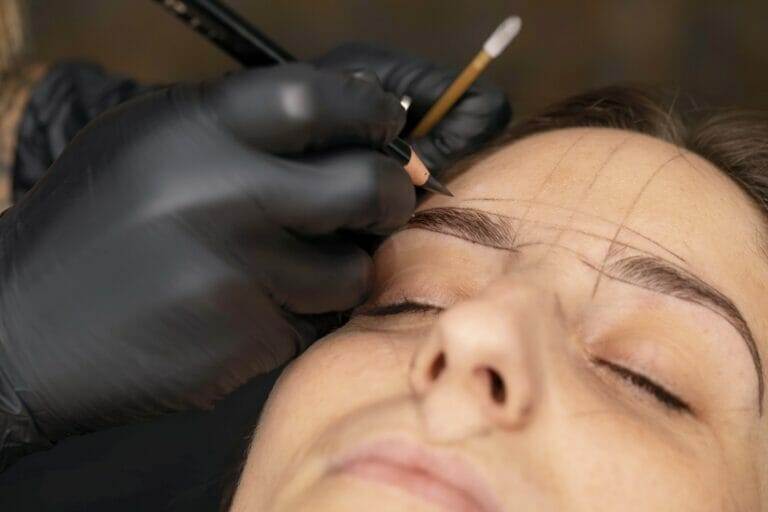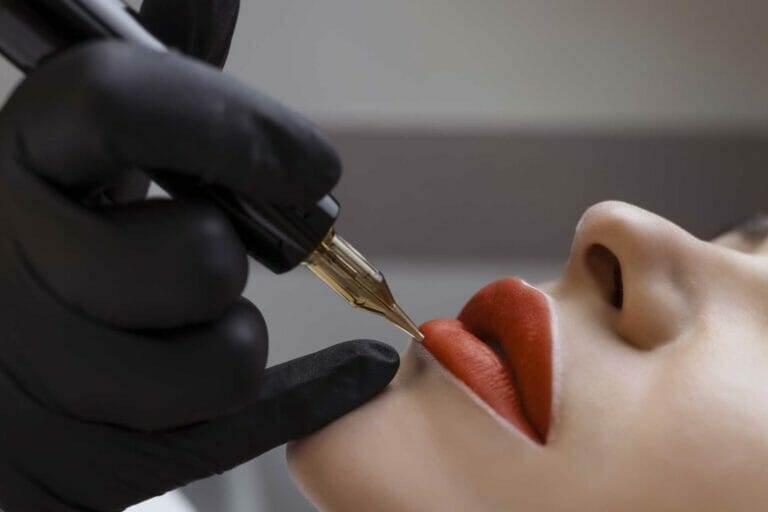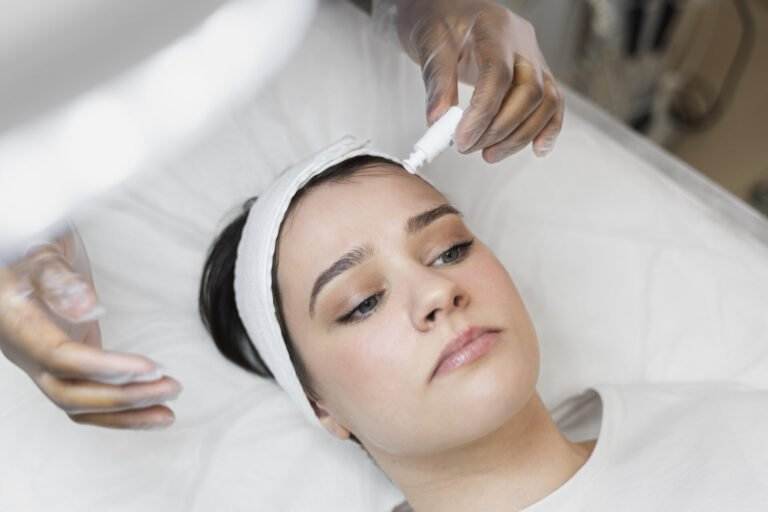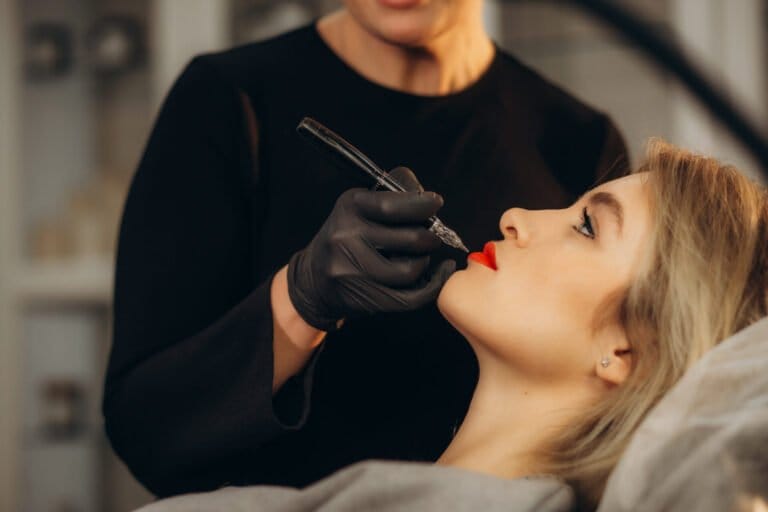Understanding Cosmetic Tattoos
Cosmetic tattoos have become increasingly popular, offering individuals a way to enhance their natural features with semi-permanent solutions. These tattoos, often referred to as “permanent makeup,” include procedures such as eyebrow tinting, lip blushing, and eyeliner application. Unlike traditional body art, cosmetic tattoos are designed to look subtle and natural, providing an opportunity for those who lead busy lives to maintain their beauty effortlessly. For example, consider Jessica, a working mother who found herself spending an hour each day just to apply her makeup. After her cosmetic tattoo procedure, her mornings became much simpler, allowing her more time to spend with her children. This illustrates how cosmetic tattoos can transform not only one’s appearance but also their daily routine.
Importance of Proper Aftercare
However, the journey to achieving stunning results doesn’t stop with the procedure itself. Proper aftercare is crucial in ensuring that the cosmetic tattoos heal beautifully and maintain their intended appearance. Here are some essential aftercare tips:
- Keep the area clean and dry: Gently cleanse the tattooed area according to the artist’s instructions.
- Avoid touching: Hands can introduce bacteria, leading to infections.
- Don’t pick or scratch: Let the scabs fall off naturally to prevent scarring.
Failing to follow aftercare recommendations can lead to fading, infections, or uneven results, ultimately diminishing the benefits of the procedure. Without proper care, even the most skilled artist’s work can go amiss, which is why understanding and committing to aftercare is not just advisable; it’s a necessity for anyone considering cosmetic tattoos. Let’s explore the precautions that should be taken before the healing process begins.
Precautions Before Healing Process Begins
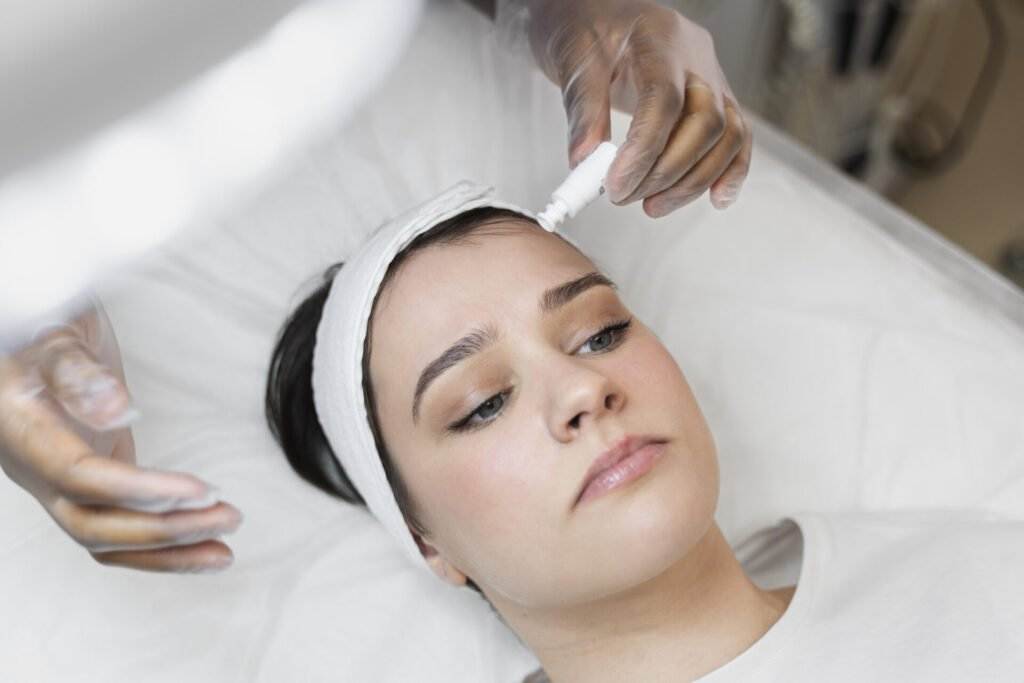
Consultation with Tattoo Artist
Before diving into the world of cosmetic tattoos, it’s imperative to consult with a qualified tattoo artist. This step is not just a formality; it’s fundamental in ensuring that the final results align with your expectations and that you choose the right procedure for your needs. During the consultation, don’t hesitate to ask questions. You might want to cover:
- Artist’s Experience: Inquire about their training and experience with cosmetic tattoos.
- Portfolio Review: A look at their previous work can offer insights into their style and skill.
- Technique Explanation: Understanding the process can help ease any apprehensions.
Consider Sarah, who was nervous about getting her eyebrows tattooed. Her consultation revealed the artist’s extensive experience and allowed her to see before-and-after photos of satisfied clients, giving her the confidence to proceed.
Avoiding Certain Activities
In preparation for the tattooing process, there are certain activities that should be avoided to ensure optimal healing conditions.
- Avoid blood thinners: For at least 24 hours before the procedure, steer clear of alcohol, caffeine, and certain medications to minimize bleeding.
- Skip the sun: Excessive sun exposure can irritate the skin; stay out of the sun for a few days leading up to your appointment.
- Postpone skincare treatments: Procedures like facials or chemical peels can overly sensitize the skin.
By taking these precautions, you’ll not only enhance your healing experience but also help achieve the beautiful results you desire. Next, let’s explore a day-by-day healing guide that will help you navigate the critical first few weeks post-procedure.
Day-by-Day Healing Guide
First Week Care
The first week after getting a cosmetic tattoo is critical for achieving the best results. During this phase, the skin undergoes initial healing and may require extra attention. Here are some essential tips to follow during the first week:
- Keep it clean: Gently cleanse the tattooed area twice a day with a mild, fragrance-free cleanser. Avoid scrubbing or using hot water.
- Moisturize regularly: After cleansing, apply a thin layer of a recommended ointment or moisturizer to keep the area hydrated.
- Avoid water immersion: Refrain from swimming or soaking in baths. A quick shower is fine, but keep the tattoo area dry.
Take a moment to consider Mark, who had his lips tattooed. He diligently followed these tips, and as a result, his lips healed gorgeously without any complications. Week one is all about protecting the area and avoiding potential irritants.
Second Week Care
As you transition into the second week, the initial healing phase will continue, but signs of skin regeneration may start to appear. Your focus should shift slightly from protection to care and observation. Here’s how to navigate the second week:
- Watch for peeling: As the skin begins to renew itself, it’s normal for some peeling to occur. Avoid picking at the skin, as this can affect the final outcome.
- Soothe any irritation: If you experience mild itching, dab a little cool water or a prescribed soothing lotion, but never scratch!
- Continue moisturizing: Keep applying your ointment or moisturizer, as hydration is essential for the healing process.
Catherine, who had her eyebrows tattooed, noticed some peeling during this period but remembered her artist’s advice, which helped her stay calm and confident. Understanding what to expect during both weeks post-procedure will not only ease your mind but ensure beautiful, lasting results. Now, let’s take a look at some common aftercare mistakes to avoid.
Common Aftercare Mistakes to Avoid

Excessive Sun Exposure
When it comes to aftercare following a cosmetic tattoo, one of the most critical mistakes individuals make is exposing the area to excessive sunlight. Sun exposure can seriously impact healing, leading to fading and uneven colors, ultimately affecting the longevity of your tattoo. To protect your cosmetic tattoos from sun damage, consider these crucial tips:
- Stay out of direct sunlight for the first few weeks: If you can avoid it, that’s ideal. Cover the area with wide-brimmed hats or sunglasses when outdoors.
- Apply sunscreen diligently: Once the skin has healed, use a broad-spectrum sunscreen with at least SPF 30 on the tattooed area to prevent fading in the long term.
- Seek shade: Whenever possible, enjoy outdoor activities in shaded areas to minimize sun exposure.
For instance, Emily, who had her eyeliner tattooed, learned this lesson the hard way. After a beach vacation, she noticed significant fading. Now, she makes it a point to wear a hat when she knows she’ll be outdoors.
Using Harsh Skincare Products
Another common slip-up is the use of harsh skincare products on or around the tattooed area. The skin is especially sensitive post-procedure, and applying the wrong products can lead to irritation or delayed healing. Watch for the following pitfalls:
- Avoid exfoliants and scrubs: Steer clear of products with retinol or strong acids, as they can irritate freshly tattooed skin.
- Say no to fragrances: Opt for fragrance-free and hypoallergenic products to minimize the risk of adverse reactions.
- Refrain from heavy makeup: Skip applying makeup on the tattooed area until healing is complete, as this can block pores and lead to unwanted infections.
Recognizing these mistakes is vital for maintaining the integrity of your cosmetic tattoos. Learning from others’ experiences can save you from unnecessary setbacks. Next, let’s explore some essential long-term care tips to ensure your tattoo remains vibrant for years to come.
Long-Term Care Tips
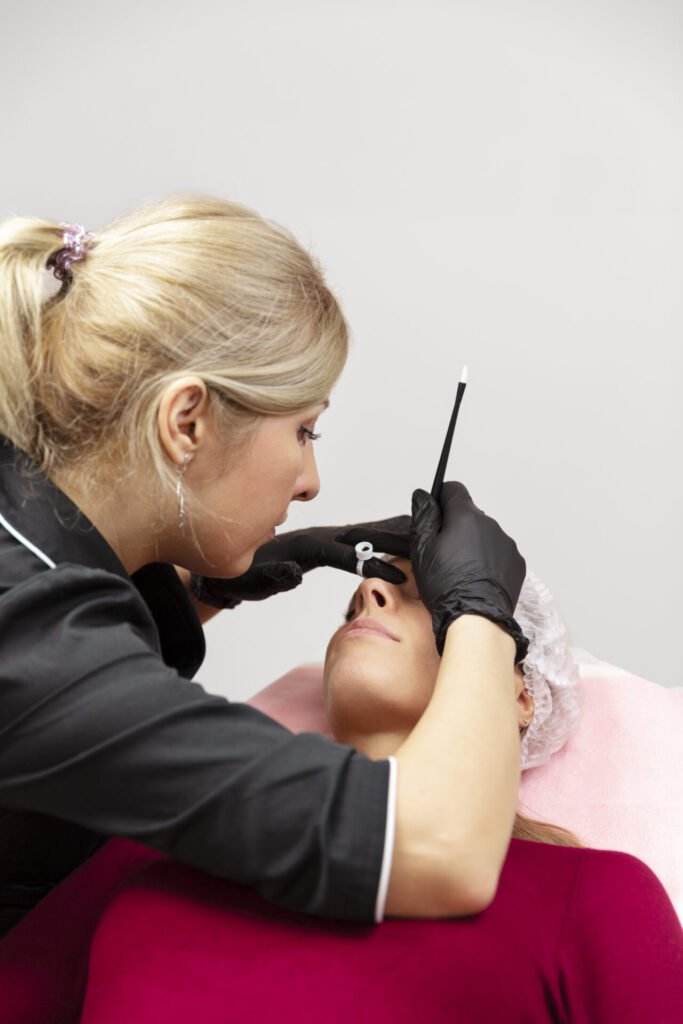
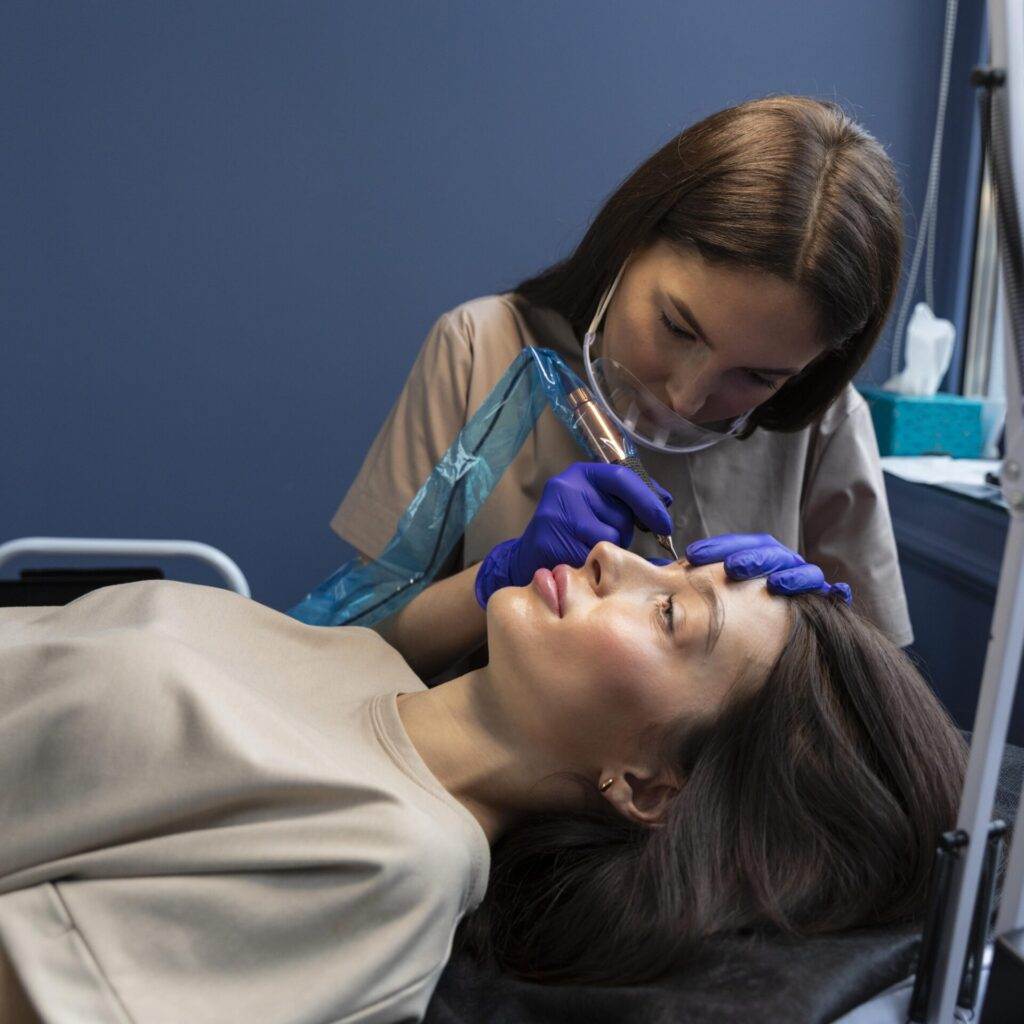
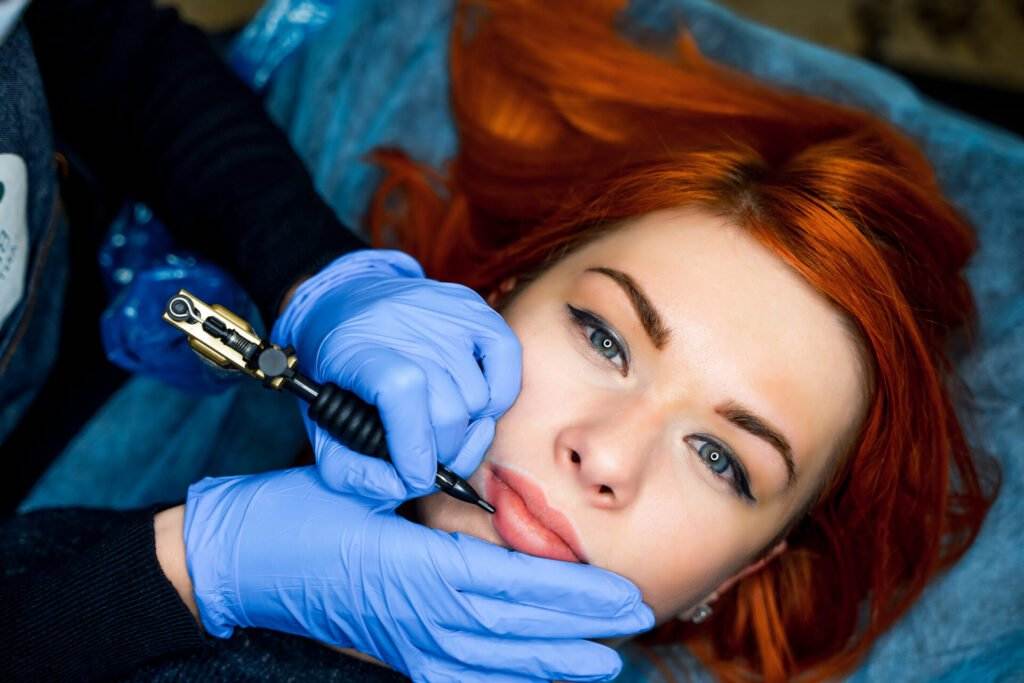
Regular Touch-Ups
Maintaining the beauty of your cosmetic tattoos extends beyond the initial healing period; it’s a long-term commitment. One of the best practices for ensuring your tattoos look fresh and vibrant is scheduling regular touch-ups. Most cosmetic tattoos require occasional maintenance, typically every 6 to 12 months, depending on the procedure and individual factors such as skin type and lifestyle. Here’s why touch-ups are essential:
- Color Refresh: Over time, pigments may fade due to natural skin regeneration and environmental factors, making touch-ups an excellent way to restore vibrancy.
- Fine-tuning: These sessions allow artists to refine the shape or density of the tattoo, ensuring it continues to meet your aesthetic goals.
Consider Julia, who opted for lip blush tattoos. After six months, she noticed her color had softened, so she scheduled a touch-up session. The result? A perfectly refreshed look that brought her confidence back. Regular maintenance can be a game-changer for your cosmetic tattoos.
Protecting Tattoos from Fading
To prolong the life of your cosmetic tattoos, protecting them from fading is crucial. Here are some effective strategies to adopt:
- Consistent Sunscreen Application: As discussed earlier, apply sunscreen daily on the tattooed area to shield it from UV rays.
- Limit Hot Showers: Prolonged exposure to hot water can break down pigments; opt for lukewarm showers instead.
- Moisturize Daily: Hydrated skin retains color better; use a gentle, hydrating lotion to maintain your skin’s elasticity and appearance.
For example, Luke, who had his eyebrows tattooed, learned to incorporate sun protection into his daily routine after noticing signs of fading. By being proactive, he has successfully maintained the integrity of his tattoo for years. Focusing on regular touch-ups and protecting your cosmetic tattoos from fading will ultimately keep them looking stunning and lively. Next, let’s discuss some common healing challenges and how to address them effectively.
Addressing Healing Challenges
Dealing with Itching
As your cosmetic tattoos heal, it’s common to experience some itching, which can be quite uncomfortable. That itch can feel unbearable; however, it’s important to resist the urge to scratch, as this can compromise the outcome of your tattoo and lead to scarring. Here are some effective strategies for managing itching during the healing process:
- Keep the area moisturized: Applying a light, recommended ointment can significantly alleviate dryness and reduce itching. Just be sure not to overapply or use heavy creams that might suffocate the skin.
- Use cold compresses: If the itching becomes too intense, dabbing a cold compress gently on the area can provide immediate relief without the need to scratch.
- Distract yourself: Sometimes, distraction is the best remedy. Engaging in activities like reading, watching a movie, or even going for a walk can help take your mind off the itch.
For instance, Mia, who had her eyebrows tattooed, found that using a cool, damp towel over her brows eased the itch tremendously, allowing her to relax during the healing phase.
Handling Swelling
In addition to itching, it’s not unusual for the tattooed area to become swollen, particularly in the initial healing days. Although swelling typically subsides on its own, there are several steps you can take to minimize it. Consider these tips:
- Keep your head elevated: During sleep, try to prop your head up with pillows to reduce blood flow to the area, which can help minimize swelling.
- Apply cold compresses: Just like with itching, using a cold compress can gently reduce swelling. Apply for about 10-15 minutes a few times a day for best results.
- Avoid strenuous activities: High-impact workouts or activities that cause exertion can increase swelling, so it’s wise to keep physical activity light while healing.
Jordan, who opted for lip tattooing, found that heeding these tips significantly reduced his swelling, ultimately contributing to a smoother healing process. By addressing challenges such as itching and swelling promptly and effectively, you can help ensure that your healing process is both comfortable and successful. Next, we will discuss when to seek professional help and how to handle any concerning symptoms.
Seeking Professional Help
Recognizing Signs of Infection
While cosmetic tattoos can enhance your appearance, it’s crucial to be vigilant about any signs of infection during the healing process. Though infections are not common, early detection is key to preventing complications. Keep an eye out for these warning signs:
- Increased redness: While some redness is normal initially, significant, persistent redness around the tattooed area can be a red flag.
- Excessive swelling: Swelling that worsens after a couple of days instead of improving may indicate an infection.
- Pus or discharge: Any fluid that appears yellow or green should be reported to a professional immediately.
- Fever: If you experience a fever along with other symptoms, it’s crucial to seek medical attention.
For example, Lisa, after getting her eyeliner tattooed, began to notice increased redness on the fourth day. Instantly recognizing the abnormality, she contacted her artist, who advised her to visit a doctor. Fortunately, early intervention helped her heal without any complications.
Choosing a Reputable Tattoo Removalist
In some cases, clients may find that their cosmetic tattoos do not meet their expectations or experience fading over time. If you ever decide that removal is necessary, it’s vital to choose a reputable tattoo removalist. Consider these factors when searching for a professional:
- Experience and Qualifications: Investigate their certifications and how long they’ve been in the business of tattoo removal.
- Technology Used: Ensure they use modern techniques, such as laser removal, which tends to be more effective and less painful.
- Before-and-After Photos: Request to see results from previous clients to gauge the effectiveness of their work.
- Consultation Availability: A good removalist will offer a consultation to discuss your concerns and the process in detail.
For example, Mark found himself unhappy with the fade of his eyebrow tattoo. After thorough research, he chose a removalist with great reviews and successful client transformations, leading to a satisfactory experience. Being proactive about signs of infection and making informed choices about removal can lead to a healthier and more positive experience with cosmetic tattoos. As we conclude, let’s summarize the journey of maintaining and caring for your cosmetic tattoos that can lead to stunning, lasting results.

